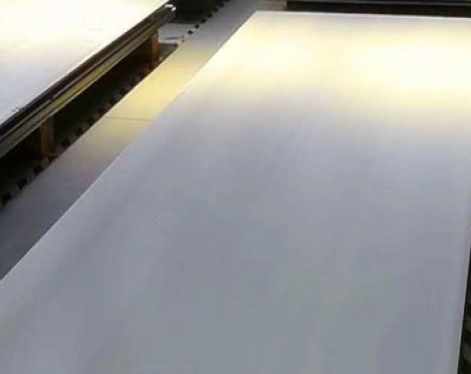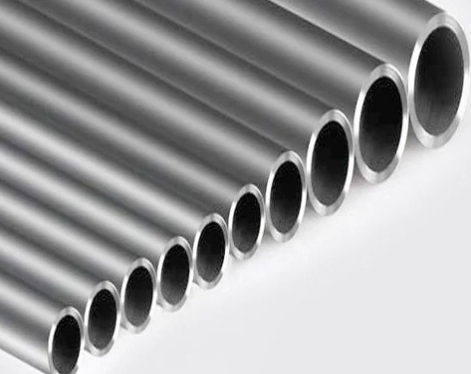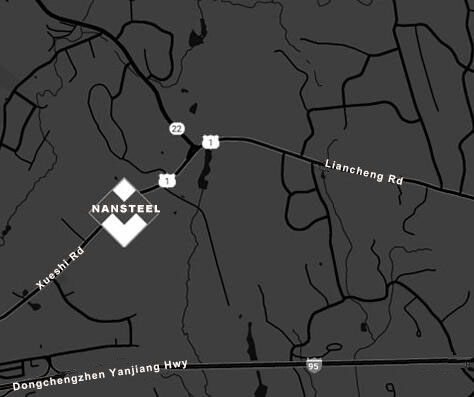There are four common industrial cleaning methods for stainless steel plates: physical cleaning, electronic cleaning, electrostatic cleaning and chemical cleaning. Nansteel Manufacturing Co., Ltd introduces the principles and treatment methods of these methods to you.
Industrial cleaning of stainless steel plates
The first is the physical cleaning method, which uses manual tools and machinery to apply external force to remove various types of dirt without changing the cleaning method of the dirt components. In other words, this is a method that does not change the original chemical molecular composition of the dirt. There are mainly mechanical cleaning methods, sweeper and scraper cleaning methods, drill pipe cleaning methods, and shot blasting cleaning methods; The second is hydraulic cleaning, low-pressure hydraulic cleaning. (The pressure of low-pressure cleaning is 196-686 kPa, about 2-7 kgf/cm2, equal to 0.2-0.7Mpa) The third type is high-pressure hydraulic cleaning. The pressure of high-pressure cleaning is 4900 kPa, about 50 kgf/cm2, which is equal to 5Mpa. This method is also called high-pressure water jet method and high-pressure cleaning machine.
The second is the electronic cleaning method to prevent scale. The principle of descaling is to use a high-frequency electric field to change the molecular structure of water, making it anti-scaling and descaling. The physical structure of the molecule has changed. The original chain-like macromolecules will break into single water molecules. The positive and negative ions of the salt in the water are surrounded by single water molecules, and their movement speed is reduced, the number of effective collisions is reduced, and the electrostatic attraction is reduced. They cannot form structures on the heated wall tube surface, thus achieving the purpose of scale prevention. At the same time, due to the increase in the dipole moment of the water molecule, its ability to attract the positive and negative ions of the salt (scale molecules) is increased, making the scale on the heated surface or tube wall soft and easy to fall off, producing a descaling effect.

The third type is the electrostatic anti-scaling method. Its descaling principle is the same as that of electronic descaling, which is to achieve the purpose of scale prevention and descaling by changing the state of water molecules. The only difference is that the latter uses the effect of electrostatic field rather than electronic effect. Its specific mechanism is to use the polarity of water molecules (also called dipoles). When water dipoles pass through the electrostatic field, each water dipole will be arranged in a positive and negative order. If there are dissolved salts in the water, its positive and negative ions will be surrounded by water dipoles and arranged in the water dipole group in a positive and negative order. They cannot move on their own, so they cannot get close to the wall of the pipe , and then deposit on the wall of the pipe to form scale. At the same time, the oxygen released in the water can produce a very thin oxide layer on the wall of the pipe, which can prevent corrosion of the wall of the pipe.
The last category is chemical cleaning, which can use chemical agents to make surface pollution or covering layers (such as scale layers) react with them and be removed, such as acid cleaning and alkaline cleaning of scale layers. In order to prevent the substrate from being corroded during chemical cleaning or to control the corrosion rate within the allowable range, it is usually necessary to add an appropriate amount of corrosion inhibitors and additives that have activation, penetration, and wetting effects to the chemical cleaning solution.
Read more: How Long is the Service Life of Stainless Steel Plates?
Industrial cleaning of stainless steel plates
The first is the physical cleaning method, which uses manual tools and machinery to apply external force to remove various types of dirt without changing the cleaning method of the dirt components. In other words, this is a method that does not change the original chemical molecular composition of the dirt. There are mainly mechanical cleaning methods, sweeper and scraper cleaning methods, drill pipe cleaning methods, and shot blasting cleaning methods; The second is hydraulic cleaning, low-pressure hydraulic cleaning. (The pressure of low-pressure cleaning is 196-686 kPa, about 2-7 kgf/cm2, equal to 0.2-0.7Mpa) The third type is high-pressure hydraulic cleaning. The pressure of high-pressure cleaning is 4900 kPa, about 50 kgf/cm2, which is equal to 5Mpa. This method is also called high-pressure water jet method and high-pressure cleaning machine.
The second is the electronic cleaning method to prevent scale. The principle of descaling is to use a high-frequency electric field to change the molecular structure of water, making it anti-scaling and descaling. The physical structure of the molecule has changed. The original chain-like macromolecules will break into single water molecules. The positive and negative ions of the salt in the water are surrounded by single water molecules, and their movement speed is reduced, the number of effective collisions is reduced, and the electrostatic attraction is reduced. They cannot form structures on the heated wall tube surface, thus achieving the purpose of scale prevention. At the same time, due to the increase in the dipole moment of the water molecule, its ability to attract the positive and negative ions of the salt (scale molecules) is increased, making the scale on the heated surface or tube wall soft and easy to fall off, producing a descaling effect.

The third type is the electrostatic anti-scaling method. Its descaling principle is the same as that of electronic descaling, which is to achieve the purpose of scale prevention and descaling by changing the state of water molecules. The only difference is that the latter uses the effect of electrostatic field rather than electronic effect. Its specific mechanism is to use the polarity of water molecules (also called dipoles). When water dipoles pass through the electrostatic field, each water dipole will be arranged in a positive and negative order. If there are dissolved salts in the water, its positive and negative ions will be surrounded by water dipoles and arranged in the water dipole group in a positive and negative order. They cannot move on their own, so they cannot get close to the wall of the pipe , and then deposit on the wall of the pipe to form scale. At the same time, the oxygen released in the water can produce a very thin oxide layer on the wall of the pipe, which can prevent corrosion of the wall of the pipe.
The last category is chemical cleaning, which can use chemical agents to make surface pollution or covering layers (such as scale layers) react with them and be removed, such as acid cleaning and alkaline cleaning of scale layers. In order to prevent the substrate from being corroded during chemical cleaning or to control the corrosion rate within the allowable range, it is usually necessary to add an appropriate amount of corrosion inhibitors and additives that have activation, penetration, and wetting effects to the chemical cleaning solution.
Read more: How Long is the Service Life of Stainless Steel Plates?









